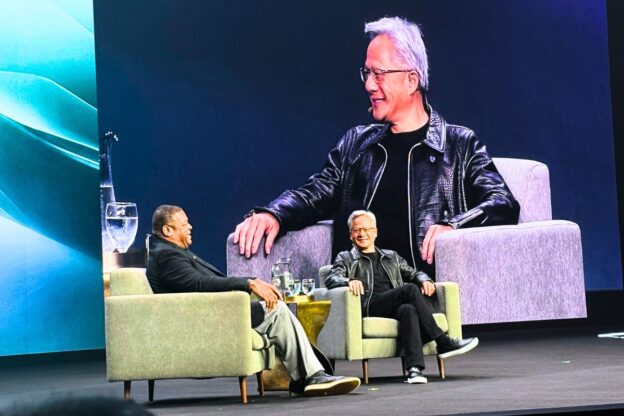“Hindi is the hardest language model region in the world. And if anybody can do it, you (India) can. Once India figures out how to create the Hindi large language model, you can figure it out for every other country,” Huang said.
Nvidia CEO Jensen Huang highlighted the unique challenges posed by the Hindi language in developing large language models (LLMs), citing the diverse dialects that shift every 50 kilometres as a significant hurdle.
Speaking at the Nvidia AI Summit in Mumbai on October 24, Huang said that overcoming these challenges could position India as a global leader in AI, with the potential to build models for any region worldwide.
“This (Hindi) is the hardest language model region in the world. And if anybody can do it, you (India) can. Once India figures out how to create the Hindi large language model, you can figure it out for every other country,” Huang said at the Nvidia AI Summit in Mumbai on October 24.
The comments come as Nvidia released a small language model (SLM) for Hindi, which has over half a billion speakers. Available as an NVIDIA NIM microservice, the model, dubbed “Nemotron-4-Mini-Hindi-4B”, can be deployed on any NVIDIA GPU-accelerated system.
IT services company Tech Mahindra is the first to use the Nemotron Hindi NIM microservice to develop an AI model called Indus 2.0, which is focused on Hindi and dozens of its dialects.
He said the application layer above the LLM is the next logical step, and that Nvidia is working with several companies to bring AI to the ecosystem of India. “AI native companies that are creating new applications, and then our service partners from Wipro to Infosys to TCS, working with us to take the AI models and the AI infrastructure out to the world’s enterprises. Now that’s Nvidia in India,” Huang said.
He then went on to say relevant AI infrastructures are needed to create AI. These machines take energy and convert it into tokens—floating point numbers—which then reconstitute into artificial intelligence. He described this shift as part of a new industrial revolution, where vast AI factories will process data and generate intelligence at scale, transforming industries globally.
Huang also touched on the broader impact of AI development in India, highlighting that the nation, traditionally known for exporting software, is now poised to export AI. “Remember, India used to be a country that produced software, you exported software. India is going to export,” Huang said.
Meanwhile, Nvidia is also ramping up its commitment to artificial intelligence (AI) in India, announcing strategic partnerships with Indian IT firms at the Nvidia AI Summit. Apart from Tech Mahindra, Tata Consultancy Services launched a new Nvidia business unit, just minutes before the event, to speed up the industry-wide adoption of AI by its customers.
Tata Communications also unveiled an AI infrastructure partnership with Nvidia for accelerated computing.
Huang shared the stage with Reliance Industries Chairman Mukesh Ambani, discussing the transformative role of AI in reshaping industries and India’s potential as a global AI leader. They also discussed building AI infrastructure with NVIDIA’s advanced GPUs and harnessing foundational models for Indian languages.
Also read: Nvidia partners with Indian IT firms to boost AI development
https://www.moneycontrol.com/technology/nvidia-ceo-jensen-huang-says-hindi-is-the-most-challenging-language-for-llm-development-article-12850023.html/amp





